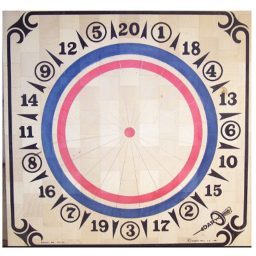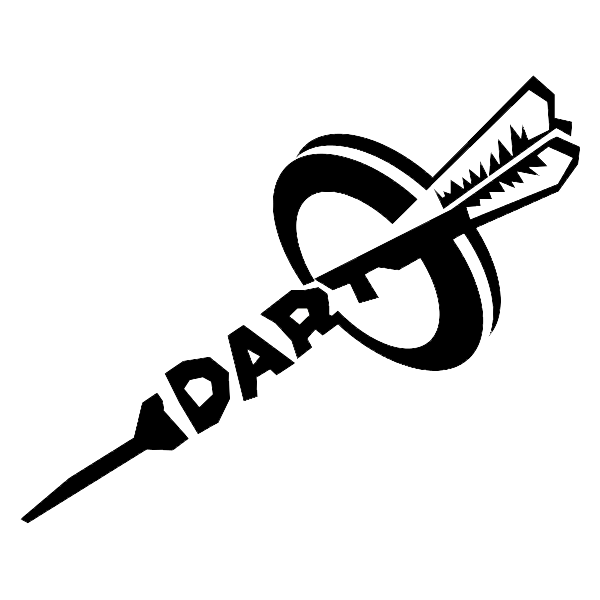Returning to Dan William Peek’s research: He was unable to find any evidence that darts was played in the United States before 1915, though he suspects it may have begun somewhat earlier than that.
There is a tradition that America’s first dartboard was made about 1915 by John Pearson, an English immigrant who operated a tavern in Philadelphia. His son later founded the Dartboard Equipment Company, better known as DECO. In 1982, the Deco’s factory burned down in a fire and the company decided not to rebuild. With the company’s blessing, a long time employee, Fred Martine, took up the Mantle and continue manufacturing dartboards and supplies under the name Darto.
The Apex Manufacturing Company, which originally made wooden ladders, began producing dartboards some time before 1920. The Widdy Company, which was founded in 1908 to sharpen razor blades, got into the darts business during the 1920s. Wood Specialty Co was the maker of the Dart Shark line of dartboard, which was later acquired by Prodart Manufacturing.
But American darters got away from British darts and created their own version of the sport, founded on baseball. That resulted in the so-called American-style dartboard, on which the numbers 1 through 9 are circled, since those are the chief targets. A baseball darts match is made up of 9 innings (extra innings if necessary). Each player throws three darts per inning and the target is the number that represents that inning; that is, 1 in the first inning, 2 in the second inning, and so on. The American-style board was patented by DECO in 1937, but it had been invented some time before that, possibly in the late 1920s.

Another unique American game, dartball, was probably inspired by baseball darts, although it’s very different. The dartball board is a a large square with target areas indicating Single, Double, Triple, Home Run, Sacrifice, Fly Out, and so forth. There are two teams, usually of nine players each, who “come to bat” in sequence, as in a baseball game.

Dartball was invented in the early 1920s, most likely by Charles High of Apex Manufacturing. The Apex board is 4 feet square and the throwing distance is 20 feet or more. DECO and other manufacturers often made two-faced, standard-sized boards with the baseball darts face on one side and a dartball face on the other.
Dartball became especially popular in the Midwest, where the sport was often organized around churches. As a youngster, I often played dartball with my grandfather in the basement of the Methodist church in Shawano, Wisconsin. My grandfather was the leadoff hittter for his church team, which belonged to a league of Methodist church teams in northeastern Wisconsin. In To the Point, Peek writes, “Wisconsin became, and still is, the center of Dartball playing in the country–in the world, for that matter, since the sport is unknown outside of North America.”
Baseball darts is mainly an Eastern sport. There are two chief varieties, centered on Philadelphia and Albany. The Philadelphia version has double and triple multiplier rings, as in English darts, but the triple ring is on the outside of the target area and the double ring is immediately inside it. The Albany version of baseball darts has no triple multiplier, only a double multiplier ring circling the outside of the target area.
The traditional American dartboard is made of basswood, the wood of the linden tree. Darts are also made of wood and fletched with three or four turkey feathers.
Because of Prohibition, American darts didn’t develop as a tavern sport. Instead, it became popular in company recreation rooms, clubs, firehouses, and service organizations. After Prohibition ended in 1933, though, darts did move into bars and taverns.
It’s hard to gauge just how popular the sport was. The fact that there were three equipment manufacturers in the Philadelphia area and at least one other near Albany is some indication that American-style darts was steadily gaining adherents during the 1930s. Another indicator of popularity is that, in 1943, the Widdy Dart Board Company received an order from the War Department for about a million darts to be shipped to the armed services and USOs throughout the world. (Ironically, the War Production Board stopped production because the company was using steel and lead considered essential to the war effort.)
Darts History
- British Style Darts
- American Style Darts
- The British Invasion
